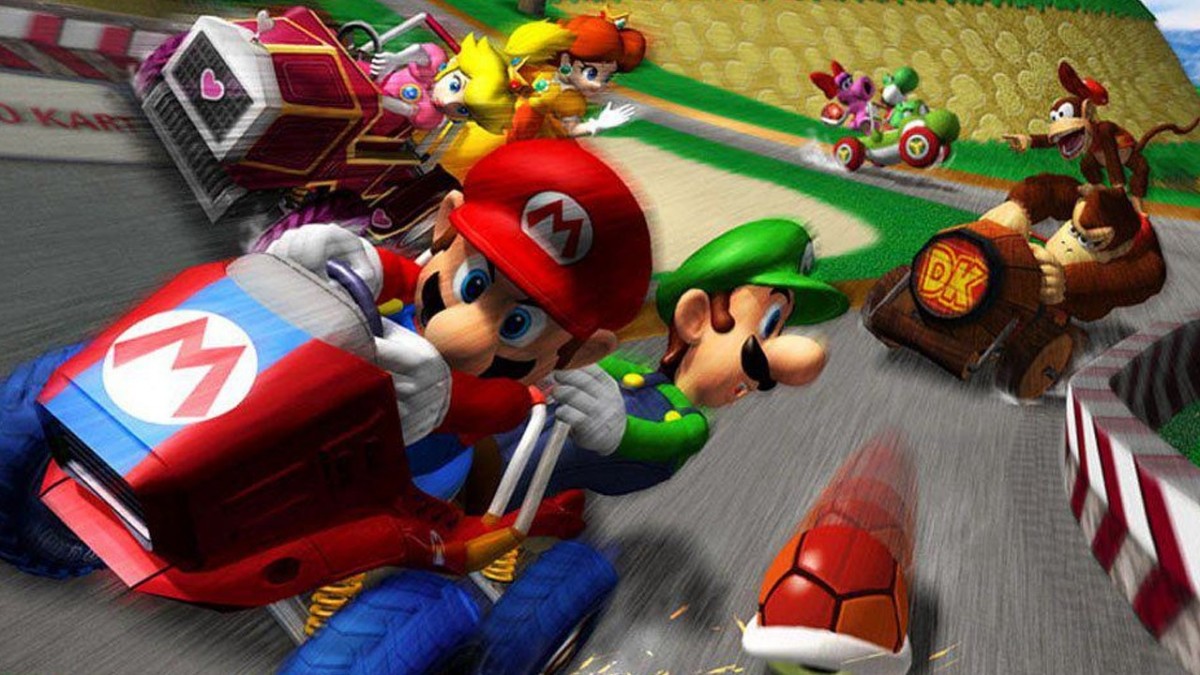Mario Kart: Double Dash was the fourth entry in the Mario Kart series, which began back in 1992. (Photo courtesy of Nintendo)
Shane Foley
Connector Editor
For Nintendo fans, “Mario Kart” games have become as expected as the rise and fall of the sun each day. Bundle package for the Gamecube, bundle package for the Wii, bundle package for the Wii U; it has excalated to the point where a new addition to the “Mario Kart” franchise is practically guarenteed with the release of every new console. How do these games separate themselves from each other then? How do you pick favorites in a franchise in which every game doesn’t stray from the single kart racing experience? Well, one reason why “Mario Kart: Double Dash” is dominating lists on Youtube and Reddit is because they do stray from this experience.
“Mario Kart: Double Dash”, released for the Gamecube in 2003, is aptly named for it’s feature mechanic; each kart in this game has two drivers. The player selects two characters before each race, and one kart that they share. During actual gameplay, though, only one character begins on the steering wheel, while the other character rides on the back of the kart. Players can switch the characters by pressing a button.
This mechanic, in conjunction with the advent of character exclusive items, led to a large amount of new strategy that had to be taken into account for every race. The character exclusive items were special items that changed depending on which character was in the backseat (Mario had fireballs, Yoshi fired an egg, Donkey Kong spawned a large banana, etc.).
These mechanics meant that players spent a lot more time in the character select screen. Whereas in previous games, each character was pretty uniform ability-wise to the rest of the cast, in “Mario Kart: Double Dash” the characters were vastly different. While players in previous games might gravitate toward crowd favorites like Yoshi or Luigi, in this game they may be inclined to instead choose Wario for his bomb item, or Baby Mario for his Chain Chomp.
The kart select also became an important feature to gameplay. Different karts had different stats, and the kart selections changed based on the weight of the characters selected. Heavy characters like Bowser and Donkey Kong selected from heavy speed karts, while lighter characters like Toad and Baby Mario selected from karts with low speed but high acceleration. There was also a mid wieght class for characters like Peach and Yoshi with karts which had more balanced stats. Unlike the dual driver mechanic, this feature would appear in most subsequent “Mario Kart” games.
Also straying from the typical “Mario Kart” formula were the track designs. This game alters the standard “Mario Kart” tracks to a great degree and not only in the area of track hazards. They go as far as to dynamically change the number of laps from the traditional three to whatever number best fits the current map, from the longer Wario Colliseum getting two laps to the much shorter Baby Park getting seven. Some other fun mechanics are a sand pit that sucks the racer in if the racer doesn’t avoid it in Dry, Dry Desert, two sets of huge Thwops on both lanes in the game’s version of Bowser’s Castle and a cannon that shoots you to the top of the track in DK Mountain. They also change up common motifs in “Mario Kart” games. For instance, they take the idea behind Toad’s Turnpike from “Mario Kart 64” and add extra lanes and a bunch of shortcuts in Mushroom City. They also took Koopa’s Beach from “Mario Kart 64” and added multiple flippies in Peach Beach.
Of course, since this game’s release, we have seen many more changes to the Mario Kart formula, including underwater/air travel in “Mario Kart 7” and anti-gravity tracks in “Mario Kart 8”. The racing mechanics in these games, however, still stay true true to the classic elements of racing games. This is why “Mario Kart: Double Dash”, while it certainly isn’t everybody’s favorite, will be a game that we will probably still be talking about for a while. This is because, as with other games that dared to stray from the formula in their franchises, like “Super Smash Brothers: Melee”, “Legend of Zelda: Ocarina of Time” or “Metroid Prime”, they stand out in their franchises that much more.




